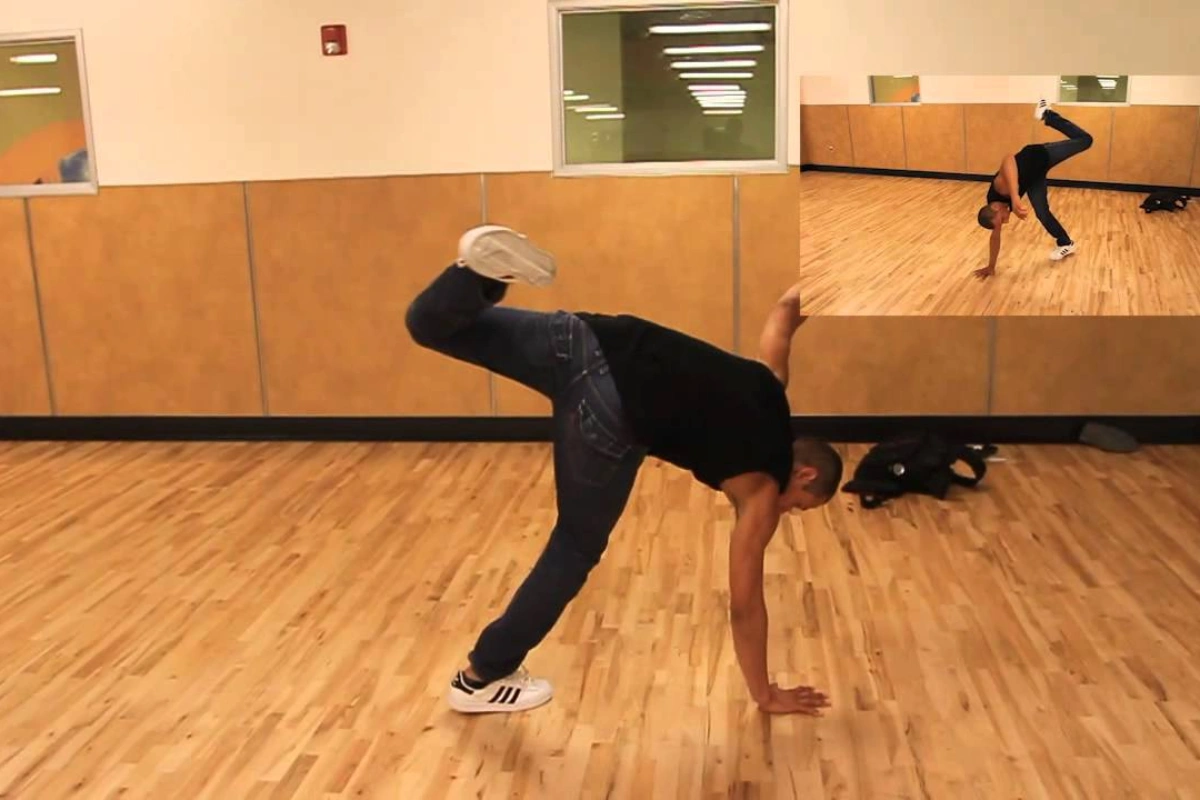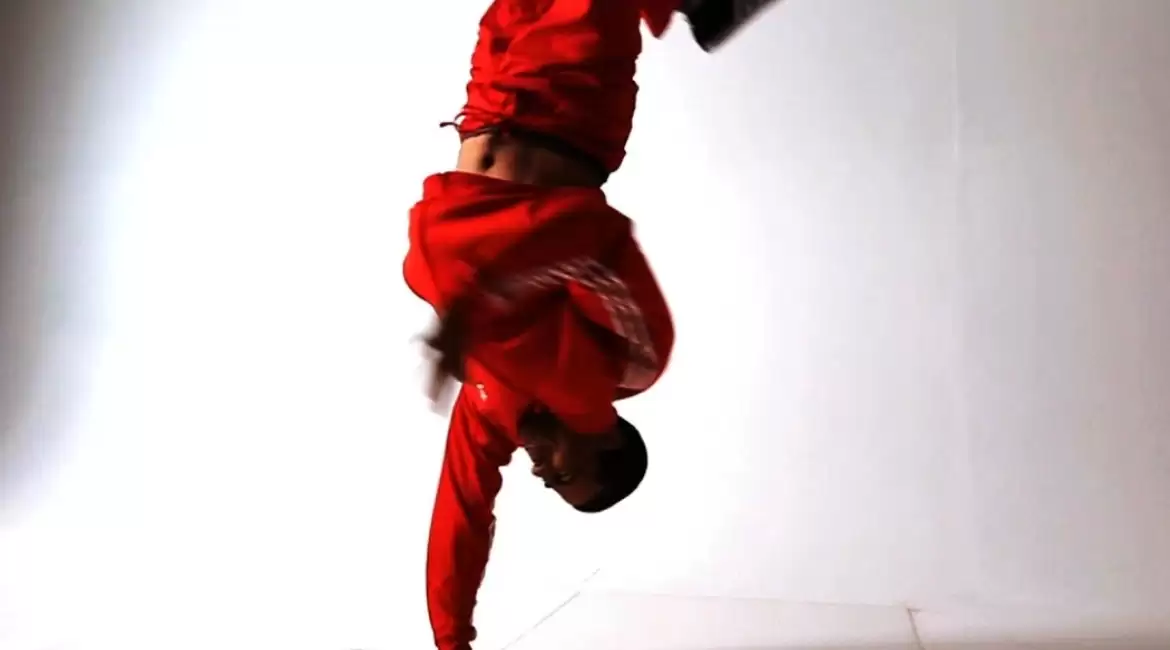Mastering the 1990s, a hallmark move in breakdancing, requires a blend of strength, balance, and precise technique. Originating from the creativity of breakers like Trac 2 and popularized by pioneers such as Crazy Legs and Lil Lep, the 1990s epitomize the dynamic evolution of ground power moves in the dance form. This guide provides a comprehensive breakdown of the steps and principles essential for beginners looking to learn and perfect this impressive maneuver. From initial setup to maintaining momentum and achieving controlled landings, each aspect is explored to help aspiring breakers develop proficiency and confidence in executing the 1990s with style and safety.
What is the 1990s Move?
The 1990s move from the 1990s breakdance era revolves around a technical feat known as handspins. This move, often seen as futuristic, begins with a one-handed handstand. Breakers initiate this position and aim to spin as many times as they can, with each 360-degree rotation counted as one complete “1990.”
Beyond its basic definition as a spinning maneuver, the 1990 is revered as a power move within the breakdancing community. Many breakers skillfully combine multiple 1990 spins with other power moves to craft mesmerizing routines that showcase both creativity and athleticism.

How Do Breakers Transition Into the 1990s Breakdance Move?
Transitioning into the 1990s breakdance move requires a meticulous approach to practice and technique. Establishing a well-rounded practice regimen is crucial for effectively integrating this move into your dance repertoire. Mastery of power flow dynamics is particularly pivotal, as it enhances the fluidity and gracefulness of executing the 1990.
Historically, breakers initially transitioned into the 1990 from foundational moves such as the six-step, swipe, and power start. These served as stepping stones, allowing dancers to seamlessly enter the one-handed handstand position that defines the 1990. Typically, breakers concluded the move either standing upright or in a dramatic back freeze pose.
As breakdancing evolved, the complexity of combinations escalated. Power combos became more intricate, incorporating techniques like headspins, backspins, flares, and halos into the transition sequences. Notably, headspins gained immense popularity during the period spanning from 1988 to 1993, contributing to the evolution of breakdance routines.
To elevate your proficiency in breaking, mastering the 1990 with multiple rotations becomes paramount. Contemporary breakers often execute multiple consecutive 1990 spins, with the current record standing at an impressive 27 rotations achieved by Cico in the year 2000. This feat underscores the advanced skill level and dedication required to excel in the dynamic realm of breakdancing.
The History of 1990s Breakdance Moves
The history of the 1990s breakdance move traces back to its inception by a breaker named Trac 2 around 1978 or 1979. Many believe its origins stem from one-handed spins observed in professional gymnastics or from a handstand pirouette, akin to movements gymnasts execute when dismounting from a pommel horse.
However, despite Trac 2’s invention, it took several years for the 1990s move to solidify its place in breakdancing history.
The popularization of the move began in earnest from 1982 onward, largely credited to legendary breakers Crazy Legs and Lil Lep. By 1984, the 1990 had become a cornerstone of the breakdance scene, prominently featured in performances by crews like the Dynamic Breakers.
Those familiar with the influential 1984 film “Beat Street” may recall Tiny’s rendition of the 1990 in a memorable scene. Typically, the 1990 involves clockwise rotation to the left while using the right hand, though it can also be executed in the opposite direction depending on the dancer’s dominant side. This versatility adds to its appeal and showcases the adaptability within breakdance choreography.
Where Does the 1990 Name Come From?
The origin of the term “1990” for the breakdance move reflects the intricacies of breakdancing terminology, where multiple names can exist for the same technique, yet only a few gain widespread acceptance within the local scene.
The specific designation “1990” emerged around 1980, attributed to breaker Ken Swift. He bestowed this name upon the move due to its perceived futuristic appearance. Ken Swift likened the move to a similar technique that symbolized the future, hence coining it as “1990” to denote its innovative and forward-looking nature within the breakdancing lexicon.
How to Do 1990s for Beginners
Learning to execute 1990s as a beginner involves embracing the progression of ground power dynamics, where mastery over foundational skills paves the way for more intricate maneuvers. As your confidence grows, chaining together power moves should feel increasingly natural, facilitated by the development of muscle memory.
Whether your goal is to qualify in preliminaries or simply to impress with a visually striking performance, it’s crucial to recognize that 1990s are classified as advanced moves demanding a combination of strength, balance, and precise control. Before attempting this technique, it’s advisable to achieve proficiency in fundamental aspects such as footwork essentials. Start your practice at a manageable pace to ensure safety and effective learning.
Now, here’s a detailed step-by-step guide to mastering the 1990:

Step One – Set Yourself Up
To begin mastering the 1990s, start by focusing on your setup without the distraction of music. Adopt a starting position from a squat stance, ensuring your feet are positioned closely together with your knees bent for stability and flexibility.
Next, carefully place your right hand on the ground, spreading your fingers wide to provide a solid base of support. This initial hand placement is crucial as it establishes the foundation from which you will initiate and maintain the rotational motion characteristic of the 1990s.
Step Two – Begin the Spin
After setting up your initial position, the next critical step is initiating the spin. Start by leveraging your leg to execute a powerful kick off the ground. The force from this kick generates the momentum necessary for your rotation.
Concurrently, utilize your left hand to push off firmly from the ground, initiating the spinning motion. As you start to rotate, maintain focus on stabilizing and balancing with your right hand.
A key technique here is to keep your right hand positioned as close to your body as possible, ensuring your fingers are spread wide for optimal stability. This close proximity is vital; if your hand is too far from your body, it will compromise your balance right from the outset, making it challenging to regain control and continue the spin smoothly. Adjustments in hand placement and balance are crucial elements to master as you progress in executing the intricate 1990s move.
Step Three – Keep the Momentum Going
As you find yourself airborne and in the midst of spinning, extend both legs outward and ensure they remain straight. When executed correctly, your body should align parallel to the ground, emphasizing the smoothness and precision of your movement. Initially, your primary focus will be on maintaining equilibrium, a crucial challenge during the initial stages of learning.
Once you’ve established stability, direct your attention to enhancing the spin itself. The degree of rotation achieved hinges upon the momentum generated from your initial kick-off. Engage your core muscles actively to exert control over the spin, effectively moderating the speed and stability throughout the maneuver.
Continued practice and refinement of these techniques will gradually enhance your proficiency in executing the intricate and visually dynamic 1990s move. Adjustments in technique and body positioning will contribute significantly to achieving fluidity and mastery over this advanced breakdancing technique.
Step Four – Complete and Transition
A single 1990s move consists of a complete revolution, spanning 360 degrees. Advanced breakers often extend beyond one rotation, chaining multiple revolutions seamlessly. However, for beginners, it’s prudent to focus on mastering a single 1990 initially.
To execute a graceful landing, fix your gaze on a specific point on the ground throughout the spin. Gradually lower your extended legs in a controlled descent, maintaining slight bends in your knees. Despite the speed of the spin, maintaining control is crucial not only for executing the move effectively but also for preventing potential injuries. This control is fundamental for longevity in breakdancing.
Upon completing the spin and landing smoothly, gently place your legs back onto the ground. Practice transitioning smoothly into the subsequent move you plan to incorporate into your routine.
It’s important to acknowledge that mastering the 1990s requires dedicated practice over time. Ensure you have appropriate footwear designed for breakdancing, as well as sufficient strength and conditioning to execute the move safely and effectively. Rushing into advanced moves prematurely can increase the risk of injury, so progress gradually and prioritize building a strong foundation of skills and technique.
Summary
Learning to execute the 1990s in breakdancing involves mastering a series of sequential steps and techniques that emphasize strength, balance, and control. Initially developed by Trac 2 and later popularized by breakdance pioneers like Crazy Legs and Lil Lep, the 1990s require practitioners to start from a stable squat position, initiate a powerful spin using both hands, extend their legs to achieve parallel alignment with the ground, and land gracefully with controlled movements. Mastery of this advanced move not only showcases technical skill but also requires dedication to building muscle memory and ensuring safety through proper technique and conditioning. Aspiring breakers are encouraged to progress gradually, prioritize foundational skills, and practice consistently to achieve proficiency in the 1990s and enhance their overall breakdancing repertoire.


Leave a reply